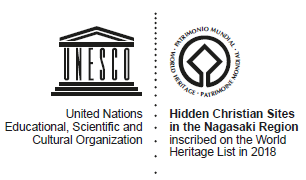 |
Here we introduce you to the religion in Japan so that you can more understand the background of the value of the property. |
Vernacular religions/beliefs in Japan (before Christianity was introduced)
Before the introduction of Christianity to Japan, Shinto, the origin of which traces back to times before Christ, existed and Buddhism was introduced to Japan in the 6th century via Korean Peninsula and spread across the nation. In addition, mountain worship, which grew out of nature worship combined with Shinto and Buddhist beliefs, became popular.
While many Japanese were Buddhists, at the same time, they would serve as parishioners at local Shinto shrines and would worship at what they considered sacred mountains. In other words, it was common in Japan for more than one religion to coexist and for Japanese to practise syncretised religions rather than one single religion.
Catholicism and Protestantism in Japan
The Christianity was brought to Japan for the first time in the middle of the 16th century by missionaries of the Society of Jesus, a Roman Catholic religious group. Due to the protection provided for the missionaries by feudal lords who sought to benefit from trade with the Portuguese ships always accompanied by Catholic missionaries, the number of Japanese converts rose to a peak of more than 370,000.
Even during the strict ban on Christianity from the 17th to the mid-19th centuries, the Catholic faith continued in some parts of the Nagasaki region. When the ban was lifted in 1873, some twenty thousand Hidden Christians remained in the region. During the ban, Japan maintained its trade relations with the Dutch, who were Protestant rather than Catholic. They came only for commercial purposes without missionaries on board, so Protestantism didn’t spread in Japan.
When Japan opened its ports to overseas trade in the second half of the 19th century, both Catholic and Protestant missionaries were dispatched for the foreigners living in Foreign Settlements within Japan. The missionaries of both sects met Hidden Christians in the Foreign Settlement in Nagasaki, but some groups of Hidden Christians who had maintained their faith originating in Catholicism decided to receive instruction from the Paris Foreign Missions Society, a Roman Catholic religious group.
Since the lifting of the ban on Christianity in 1873, Catholic and Protestant missionaries conducted broadened the scope of missionary work from not only focused on former Hidden Christians to but also on ordinary Japanese.
Based on this historical background, the term “Christianity” used in this nomination should be taken to mean Catholicism in almost all cases.
Religion in modern Japan
About 80 to 90 percent of the Japanese nominally believe in Buddhism or Shinto or both. Christians amount to one percent, even when Catholic, Protestant and other denominations are combined.
Currently, many Japanese, regardless of their nominal religion, visit Shinto shrines on memorial days for prayer and purification, and hold Buddhist funerals. In addition, they celebrate Christian events such as Christmas, and it is common to get married in a chapel or church.
In conclusion, we can say that the Japanese don’t stick to one religion but accept and coexist with diverse religions.









